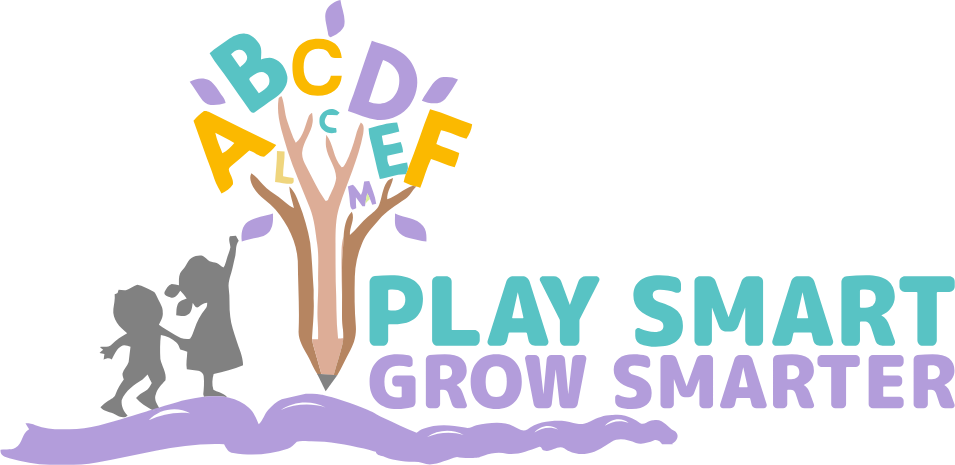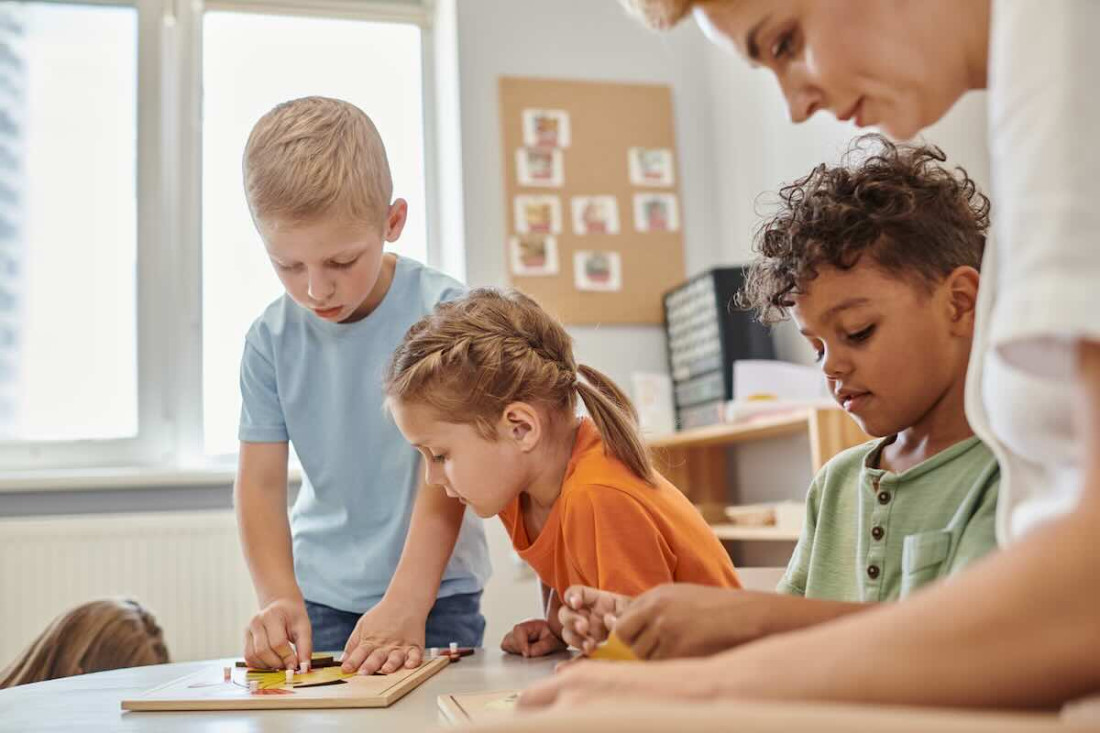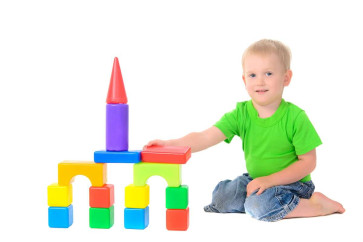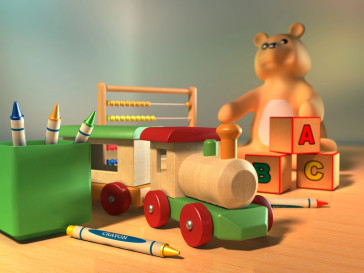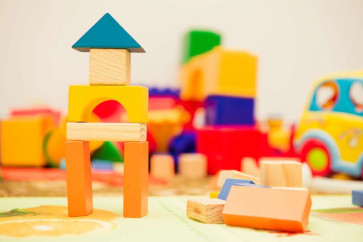Table of Contents
Ever wondered what sets Montessori education apart, and why it's known for creating eager learners for life? Unlike traditional schooling that focuses on memorizing facts and passing tests, Montessori shines with its special way of teaching kids. But what really is Montessori education, and how can you start using these ideas to help your child learn better?
The Montessori method, created by Dr. Maria Montessori in 1907, is all about growing the whole child. In Montessori schools, kids get involved in activities that build their curiosity, self-sufficiency, and sense of duty. Picture a place where toddlers select their own tasks, learn at their pace, and help out like making snacks and looking after younger kids. This captures the heart of what Montessori is.
Starting with Montessori isn't about big changes overnight. It's about slight, mindful tweaks to what you already do. Thinking about a Montessori school for your child, or bringing Montessori ideas into your home? This guide will walk you through the basics, benefits, and top tips to start this rewarding educational journey.
Key Takeaways
- Montessori education is a child-centered educational approach founded by Dr. Maria Montessori in 1907.
- Focuses on fostering independence, curiosity, and holistic development in children.
- Over 3,000 Montessori schools exist in the U.S., with more than 570 as public programs.
- Emphasizes learning at an individual pace and promotes lifelong independence.
- Getting started with Montessori can be simple, incorporating small changes at home or choosing a specialized school.
Introduction to Montessori Education
Dr. Maria Montessori developed Montessori education in the early 20th century. It's a unique educational approach that focuses on hands-on, self-directed learning. This approach helps children grow on their own, paying close attention to their individual and psychological growth.
Overview of the Montessori Method
The Montessori method is built around the idea that kids naturally want to learn. It uses special activities that help with physical, social, and intellectual growth. In a montessori classroom, kids choose what to learn, moving at their own speed. This makes learning fit their needs and interests.
The History: Who was Maria Montessori?
Dr. Maria Montessori was a trailblazing educator and Italy's first female doctor. She launched the first Casa dei Bambini in 1907 for poor children. Her teaching methods are based on science and the belief that every child can achieve greatness. Today, the U.S. has around 3,000 Montessori schools.
Why Montessori Education is Unique
What makes Montessori education programs special is how they meet each child's needs. In a Montessori classroom, kids of different ages learn from each other, creating a community. This method focuses on learning experience at one's own pace and being independent. Studies show that Montessori students often do better in reading and math than those in regular schools.
| Aspect | Montessori Education | Traditional Education |
|---|---|---|
| Learning Style | Self-directed | Teacher-led |
| Classroom Environment | Mixed-aged groupings | Same-age peers |
| Focus | Individual development | Standardized curriculum |
| Materials | Hands-on, sensory-based | Textbooks, worksheets |
| Assessment | Ongoing observation | Formal testing |
Core Principles of Montessori Education
Montessori principles focus on learning that is centered on the child. They tailor educational activities to match each child's growth stages. This approach offers a special way to look at early childhood education.
It's all about making an environment that lets kids' natural curiosity bloom. It encourages them to find things out by themselves.
Child-Centered Learning
In Montessori schools, kids are at the heart of learning. The lessons and activities change to meet each student's needs. This helps each child learn at their own speed.
This method shows respect for how each child grows. It promotes a caring and whole way of early learning.
Scientific Observation
Observing children closely is a key part of Montessori education. Teachers watch and note how students learn and grow. They use these observations to tailor the learning environment for each child.
This careful watching makes the lessons better for every student. It makes sure the teaching fits what each child needs.
Mixed Age Groupings
Montessori classes usually have kids of different ages together. This helps create a welcoming and cooperative place to learn. These are the usual age groups:
- Infants: 0 - 18 months
- Toddlers: 15 months - 3 years
- Early Childhood: 2½ - 6 years
- Lower Elementary: 6 - 9 years
- Upper Elementary: 9 - 12 years (or 6 - 12 in combined classrooms)
- Secondary: 12 - 18 years (can be divided into specified age groups: 12-14, 14-16, 16-18)
This setup encourages kids to learn from one another. It leads to peer learning and a balanced educational environment.
The Prepared Environment
The prepared environment is a core idea in Montessori education. It's carefully created to meet kids' growth needs. This space is peaceful and helps kids learn and become independent.
Importance of a Prepared Environment
Having a prepared environment helps your child explore and grow. A space with order and peace boosts their interaction with the world. It's important because chaos can hinder their ability to reason, especially from ages 1 to 3.
Key Elements of the Montessori Classroom
Key parts make up a successful Montessori classroom setup:
- Child-size furniture: Lets kids move freely and use the space on their own.
- Natural materials: Materials like wood and metal aid sensory growth and are eco-friendly.
- Multi-age groupings: Helps kids of different ages learn empathy and social skills.
Role of Montessori Materials
Montessori materials make learning by doing and engaging fun. They go from easy to complex, fitting each child's pace. Key points include:
- Boosting active learning and self-reliance
- Helping with stages of development in key subjects
- Encouraging critical thought, creativity, and solving problems
| Age Group | Key Focus | Materials Used |
|---|---|---|
| 1-3 years | Sensitive period for order | Natural, tactile objects |
| 3-6 years | Sensorial and practical life | Wooden tools, metal trays |
| 6-12 years | Academic and social learning | Advanced puzzles, math tools |
Using the prepared environment and special Montessori materials lets your child flourish in a Montessori classroom setup. It supports their growth journey.
The Montessori Curriculum: Designed for Whole-Child Development
The Montessori curriculum is a carefully structured framework designed to support the developmental needs of children from early childhood through adolescence. It is divided into five core areas: Practical Life, Sensorial, Mathematics, Language, and Cultural Studies, each offering materials and activities that build foundational skills and foster independence. For example, in Practical Life, children engage in real-world tasks such as pouring, sweeping, and food preparation, which develop concentration, fine motor skills, and confidence. The Sensorial area refines their senses through materials like the Pink Tower, Sound Cylinders, and Color Tablets, enabling them to classify and organize the world around them.
In Mathematics, hands-on tools like golden beads and number rods introduce concepts like place value, addition, and multiplication, helping children move from concrete understanding to abstract thinking. Language includes phonetic exercises, storytelling, and writing activities, with children using materials such as Sandpaper Letters and the Moveable Alphabet to build literacy skills at their own pace. Cultural Studies—an umbrella term for geography, science, history, art, and music—invites children to explore the world and their place in it, from studying continents with puzzle maps to learning about the life cycle of a butterfly.
The Montessori curriculum is not just about academics—it is holistic, interconnected, and designed to meet the child where they are. Montessori believed that children are naturally curious, so the curriculum encourages exploration and discovery rather than rote memorization. Multi-age classrooms allow younger children to observe advanced work while older children reinforce their knowledge by mentoring peers. This progression is supported by a prepared environment and high-quality Montessori materials that grow with the child, offering increasing complexity as their skills and interests develop.
Today, Montessori schools around the world continue to implement this curriculum, which has remained consistent since it was first introduced by Maria Montessori in 1929. The Montessori curriculum empowers children not just to learn facts but to develop critical thinking, problem-solving, and a lifelong love of learning—skills they will carry far beyond the classroom.
Benefits of Montessori Education
Montessori education brings a lot of benefits to kids. It helps them grow by teaching independence, critical thinking, and a passion for learning. This approach leads to amazing educational achievements. Let's look at how Montessori education improves academic and personal skills in kids.
Academic and Developmental Outcomes
For over a century, Montessori education has focused on learning by doing, and working together. It helps kids develop great social skills. It makes them better at solving problems and thinking critically. This prepares them for future academic and real-world challenges.
Independence and Self-Motivation
Montessori benefits include growing independence and self-motivation in children. Kids learn at their own speed, which boosts their motivation and sense of success. They do activities like pouring and sorting, which improve their skills. This makes kids more self-confident and ready to take the lead.
Creativity and Critical Thinking
Critical thinking and creativity are key in Montessori schools. Kids tackle tasks that need creativity and problem-solving. This helps them deeply understand and explore their world. The lessons change as kids grow, making learning exciting and relevant. This way, kids aren't just learning; they're actively involved in their education.
Getting Started: Selecting a Montessori School
Finding the right Montessori school for your child involves many crucial steps. Montessori education offers a solid foundation for learning throughout life. Yet, picking the right school can feel overwhelming.
Key Factors to Consider
There are several important aspects when choosing a Montessori school. Consider if accredited programs are available, the educational beliefs of the school, and the type of community it creates.
- Accreditation: Check if the school is officially recognized by groups like the American Montessori Society (AMS) or the Association Montessori Internationale (AMI).
- Teacher Training: It’s crucial to look at the teachers' qualifications. Experienced Montessori educators are key for a true Montessori environment.
- Classroom Environment: Visiting the school to see the classroom layout is a good idea. Look for mixed-age groups and a well-prepared environment.
- Parental Involvement: The role of parents is also vital. Schools with active parental involvement often see better results in students.
Public vs. Private Montessori Schools
The choice between public and private Montessori schools is a big one. Public Montessori schools are more common now and often less costly.
- Cost: Public schools are typically more budget-friendly. Private schools, on the other hand, may charge more due to unique materials and teacher training.
- Availability: With around 5,000 Montessori schools across the U.S., about 500 are public. Your options may vary by location.
- Resources: Private schools often have more resources. Public schools might have tighter budgets.
- Accreditation: Whether public or private, make sure the school meets Montessori accreditation standards for quality education.
Accreditations and Associations
Montessori accreditation is key in choosing the right school. It ensures the school follows essential Montessori methods.
- Recognized Bodies: Aim for schools recognized by the AMS (American Montessori Society) or AMI (Association Montessori Internationale).
- Standards: Accredited schools adhere to strict standards. This guarantees quality education and teaching methods.
- Authenticity: Accreditation means the school practices genuine Montessori methods. These are important for developing your child’s thinking and learning abilities.
| Criteria | Public Montessori Schools | Private Montessori Schools |
|---|---|---|
| Cost | Generally more affordable | Higher tuition fees |
| Availability | Limited; approximately 500 | More widespread, around 5,000 |
| Resources | May face budget constraints | Typically offers enriched environments |
| Accreditation | Ensure proper Montessori accreditation | Ensure proper Montessori accreditation |
Selecting a Montessori school is an important decision for your child's future. By focusing on the right factors, understanding public versus private options, and ensuring accreditation, you can choose wisely. This decision will reflect your educational values and meet your child's needs.
Montessori at Home
Montessori at home can change your child's learning path by boosting their curiosity and independence. You can make a learning space at home that encourages exploring and self-driven learning. Adding Montessori activities helps meet your child's needs while following Montessori principles.
One big plus of Montessori at home is making the learning fit your child's interests and speed. Activities like practical life exercises help grow confidence and independence. You can add these activities to daily life:
- Let your child help with cooking or cleaning to build motor skills and responsibility.
- Use open-ended stuff, like blocks or art supplies, for creativity and thinking skills.
- Set up a reading spot with easy-to-reach books to boost learning and language skills.
Creating a good home learning space is key to Montessori at home. It means setting up areas that are easy and safe for kids, letting them learn on their own. Important parts include:
- Low shelves and kid-sized furniture for easy access.
- Natural, safe materials for sensory fun.
- A quiet area for focused activities and learning.
Adding Montessori activities at home can be easy, like involving your child in daily tasks. Let them dress themselves, make snacks, or take care of plants. This helps them get to know their environment, boosting their motivation and discipline.
To support your efforts, plan activities that fit your child's natural rhythms. This means time for uninterrupted play and learning, similar to Montessori school cycles. It helps with focus and deep engagement.
Taking up Montessori at home is rewarding for you and your child. It promotes lifelong learning and adds much to your child's growth, blending learning with daily life smoothly.
The Role of the Montessori Teacher
The Montessori teacher plays a key role in creating a supportive and free learning space for kids. They have special teacher training that helps them guide and observe. This training also helps them make a safe space for kids to explore and learn.
Montessori Teacher Training
Montessori teacher training is thorough. It focuses on learning how to observe, be patient, and understand child development. Dr. Maria Montessori believed it's important for teachers to help kids be independent. In fact, 80% of Montessori teachers keep learning to get better at their jobs. With usually one teacher for every ten students, each child gets the attention they need.
Training for teachers includes:
- Pedagogical techniques specific to Montessori education
- Child psychology and developmental stages
- Hands-on experience in a Montessori classroom
Teacher's Role in Child's Development
In Montessori schools, teachers do more than just teach. They act as guides, watching and learning about each child's progress and interests. This way of watching and guiding is used by 75% of Montessori teachers. It helps them offer the right support for each child's growth.
Their main duties are:
- Making a safe, clean, and interesting place for learning
- Focusing on learning about emotions and relationships, which 90% of Montessori teachers think is very important
- Choosing learning materials that fit what students like and are ready for
Facilitating Learning and Exploration
The Montessori teacher helps create a respectful classroom. Here, kids feel free to explore and learn on their own. Studies show Montessori students are 30% more disciplined and respectful when working in groups. This is thanks to the community feeling their teachers help create.
How Montessori teachers help learning:
- They encourage kids to work together, which is common in 85% of Montessori schools
- They use the classroom setup to help kids learn on their own
- They keep talking with students to make the classroom better
Montessori teachers blend their roles as watchers, guides, and inspiration for curiosity. This has a big impact on a child's overall growth. It helps spark a love for learning that lasts a lifetime.
Montessori for Different Age Groups
The Montessori method works well for kids of all ages because it's flexible. No matter if you're looking into it for young kids, preschoolers, or older kids, it's always just right for your child's growth stage.
Infants and Toddlers
Montessori for toddlers taps into their keen sense of order, lasting up to age five. During these formative years, little ones learn by touching, seeing, and moving. Spaces for infants (8 weeks to 18 months) and toddlers (18 months to 3 years) help them become independent and curious.
- *Infant Community:* 8 weeks to 18 months
- *Toddler Community:* 18 months to 3 years
These places offer tools and activities that boost motor abilities, speech, and social skills. In these mixed-age groups, younger kids learn from the older ones. This helps them develop socially and emotionally.
Key takeaway: Early Montessori environments spark a child's curiosity and love of learning.
Preschoolers
The Children's House, for those aged 3 to 6, is crucial in Montessori pre-schooling. Kids stay in the same room for three years, making strong connections. This setup also allows them to mentor and be mentored by others.
In this period, the aim is to nurture self-reliance, focus, and physical coordination. They take part in various activities that boost thinking, social skills, and daily life abilities. The classroom has materials for all learning levels and interests.
- *Children’s House:* 3 to 6 years
Key insight: Montessori preschool sets the foundation for good learning habits for life.
Elementary and Beyond
The Montessori elementary program covers ages 6 to 12 and is split into Lower Elementary (6 to 9) and Upper Elementary (9 to 12). Teachers customize learning to fit each child's needs, encouraging them to research, discuss, and work together. This freedom allows them to dive deep into subjects and tackle big projects, sharpening their thinking.
- *Lower Elementary:* 6 to 9 years
- *Upper Elementary:* 9 to 12 years
Older kids help teach the younger ones in this mixed-age setting. This teaches empathy and boosts self-assurance.
Key benefit: The Montessori elementary method promotes intellectual and social growth, readying kids for future challenges in school and life.
| Montessori Age Group | Age Range | Main Focus | Duration |
|---|---|---|---|
| Infant Community | 8 weeks to 18 months | Exploration and Sensory Experience | Up to 18 months |
| Toddler Community | 18 months to 3 years | Independence and Motor Skills | 18 months to 3 years |
| Children’s House | 3 to 6 years | Cognitive, Social, and Practical Life Skills | 3 years |
| Lower Elementary | 6 to 9 years | Independent Research and Collaborative Projects | 3 years |
| Upper Elementary | 9 to 12 years | Critical Thinking and Advanced Projects | 3 years |
Using Montessori Toys
Montessori toys help grow your child's thinking and moving skills. These educational toys aim to build independence, creativity, and learning by doing. They are also age-appropriate toys, making them safe and helpful for development.
The Importance of Montessori Toys
Montessori toys do more than entertain. They are carefully made to support your child's growth steps. In fact, 85% of a child's brain grows by age three. So, using Montessori toys early on is key.
Toys like puzzles and blocks teach problem-solving. Meanwhile, toys made of wood and fabric grow the mind by offering different textures to explore.
Choosing Age-Appropriate Toys
Finding the right age-appropriate toys is key for your child's best growth. Toys that help with small movements, like bead threading, are perfect for babies and toddlers. For preschool kids, matching games that make them think are great.
Incorporating Montessori Toys into Daily Activities
Adding Montessori toys to daily play can boost your child's learning. These toys fit right into playtime, allowing for constant learning, a main aim of the Montessori way. Using Montessori toys offers both quick and long-term benefits for your child's growth.
Common Misconceptions about Montessori Education
Even though Montessori education has been around for over a hundred years, many Montessori misconceptions are still out there. It's key to clear up these educational myths to truly get what Montessori education is all about.
Montessori is Only for Wealthy Families
A big Montessori misconception is thinking it's just for the rich. It's true, that some private Montessori schools have high fees. But, there are lots of options for families from all walks of life:
- About 600 public Montessori schools around the globe offer Montessori education at a lower cost.
- Many private Montessori schools have scholarships, co-op programs, and credits from the state for childcare.
- There are thousands of private, non-profit Montessori programs that use donations to keep their fees down.
Originally, Montessori started in a poor area of Rome to help underprivileged kids.
Montessori Lacks Structure
Some think Montessori schools are all over the place, with no order. Actually, Montessori classrooms are very well-organized, made to help kids learn on their own:
- The classrooms have specific materials set up for the different ways kids grow and learn.
- Montessori trained teachers go through special programs to learn how to set up these environments.
- Kids in Montessori schools have a three-hour block of time to work, helping them focus and learn to be independent.
This setup, where kids also get to choose what they do, helps them want to learn more and teaches self-control.
Montessori is Anti-Technology
It's a myth that Montessori schools don't like tech. Although they start with physical materials, many have brought in tech in smart ways:
- They use tech to add to the learning materials, not take their place.
- Older students might get into coding, do research projects, and use digital tools to learn and explore.
In Montessori schools, tech is used thoughtfully to make sure kids are ready for today's world, while still keeping to Montessori's main ideas.
Conclusion
As our Montessori journey comes to an end, let's reflect. Montessori Education has a big impact on your child's growth. It pushes independence, exploration, and learning on their own. This method makes children want to learn more throughout their lives.
In Montessori classrooms, everything is just the right size for kids. The rooms and materials are made for them. This helps kids do things on their own and learn important skills for life.
The advantages of Montessori are clear. Kids get better at using their hands and seeing how things relate. They also become more creative and good at solving problems. Compared to other kids, Montessori children often do better, especially on tests.
The way Montessori teaches, using real experiences, is key. It helps kids use all their senses. This means they really understand the material and remember it better.
Montessori's approach has been proven effective for over a hundred years. It focuses on making kids think for themselves, be confident, and handle their feelings well. These skills help them succeed in school and in life.
The program's mixed-age classes teach children to be kind and work well with others. These qualities are very important in our diverse world today. Montessori education prepares kids to face the world's challenges with confidence. They learn to be in charge of their learning, to keep going when things get tough, and to always be curious.
FAQ
What is Montessori Education?
Montessori Education is a special way of teaching young kids. It lets kids lead their own learning. They learn by doing things themselves.
It focuses on growing on their own and respecting their natural growth. This method helps kids become independent and respectful.
Who was Maria Montessori?
Maria Montessori was a doctor and teacher from Italy who started this way of teaching. She believed in watching kids to see how they learn. Her method boosts independence, creativity, and critical thinking.
Why is Montessori Education unique?
It's unique because kids learn at their own pace and do activities that are just right for their age. Kids of different ages learn together. This helps them learn from each other in a natural way.
What are the core principles of Montessori Education?
The main ideas are letting kids lead their learning, watching them closely, and having kids of various ages together. These practices create a natural, supportive place for kids to learn.
What is a "prepared environment" in Montessori Education?
This is a specially organized classroom made to help kids learn at different stages. It has unique Montessori tools and activities. These help kids learn on their own and gain independence.
What are the benefits of Montessori Education?
Montessori helps kids do well in school and grow their social skills and creativity. It makes them independent and good at solving problems on their own.
How do I choose a Montessori school?
Look for schools recognized by Montessori groups, check their programs, and see if they're public or private. Being recognized means they really follow the Montessori way.
Can Montessori principles be implemented at home?
Yes, you can use Montessori ideas at home by making a place that's good for learning and lets kids explore. You can use special Montessori tools and activities that fit how they're growing.
What is the role of a Montessori teacher?
Montessori teachers guide kids as they grow. They learn special ways to watch and help kids learn by themselves. They create a place where kids want to discover things on their own.
Is Montessori Education suitable for different age groups?
Yes, Montessori works for all kids, from babies to elementary school students. Each age has activities made just for them, focusing on what they need to learn and how they like to learn.
Why are Montessori toys important?
Montessori toys fit just right with what kids need to grow. They help kids learn through play. These toys are a big part of learning the Montessori way. They keep kids active and learning.
What are common misconceptions about Montessori Education?
People think it's just for rich families, it doesn't have enough structure, and it doesn't use technology. But that's not true. Montessori is for everyone, has a strong structure, and uses technology in a smart way.
